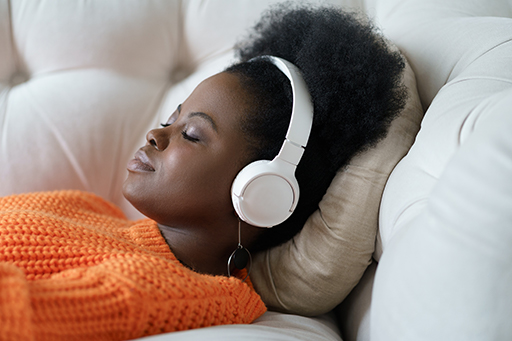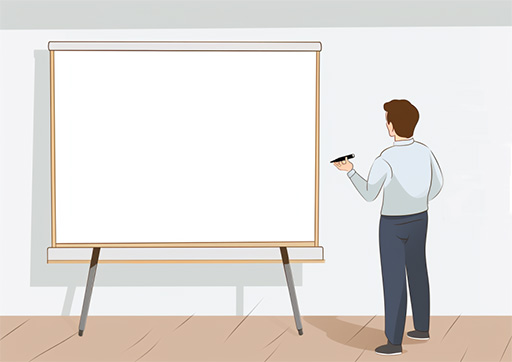Meditation For Sleep And Anxiety

Meditation creates a variety of physiological changes in the body. Mindful meditation helps to induce a sense of relaxation in the body. Blood pressure is lowered by reducing stress; the body produces serotonin and melatonin, which are required hormones for sleep. All these works together to help induce sleep. It is incredible how good you will feel after a good night’s sleep. If you are stressed, you may not even realize it because you have become accustomed to it.
What Do You Need For Meditation?
The best thing about meditation is that you can do it anywhere, at any time. You will not require any special equipment or a particular setting for meditation. It is that simple. All you will need to meditate is a quiet area where you can sit and relax and meditate. There is no specialized equipment required.
If you meditate before sleep, you may wish to meditate in your bedroom in a comfortable chair or even on your bed. You will want to set aside approximately 20 minutes of your time to gain the most benefits from meditation. Many people choose to do this right before bedtime to be relaxed when they retire for the night. Incorporating meditation into your bedtime ritual or routine is a great way to improve your sleep patterns.
Ritual And Routine
Many people have a ritual or routine that they focus on before sleeping. For some, this may include a soothing bath with some favorite bath oil or bubbles. For others, it may be a short walk or simply the routine of preparing for bed by locking the house, putting the pets to bed, and changing into pajamas. Regardless of your rituals for bed preparation, adding meditation to your routine or ritual can help set the scene for your meditation for sleep.
Incorporate your bedtime ritual or routine into your meditation. In time, your body will anticipate the habit and prepare for meditation by letting go of the stress you prepare to meditate. It may seem strange at first, but as you make it a habit, it will become so routine that you will not even think about it as you prepare to go to bed.

Set The Scene
Your goal is to be completely relaxed, so put on some comfortable clothing that is loose-fitting (pajamas are ideal for this) and will not be confined to you as you meditate. Most people start slowly and spend about 3 to 5 minutes meditating to reach 20 minutes. So, set aside the time and make sure that you are not going to have any distractions during this time. You can light a relaxing scented candle or use a diffuser with a light soothing scent if you wish. Keep the room a bit cool so that you are not overheated and avoid any external stimulation that would be distracting.
If desired, play some soft music to soothe your nerves and focus only on relaxing, not on the lyrics to a song or anything. Quiet instrumental music is ideal for this; however, music is not required for meditation; it is just an addition for some people to set the scene.
Start The Meditation Process
After you have set the scene, it is time to begin. Find a comfortable position for your meditation. Since you are meditating for sleep, many prefer to lie down on a bed for this. It is okay to sit or relax in a comfortable chair as well. Keep in mind that your goal is for sleeping, so make sure that you are near enough to your bed to crawl in it when you are finished. Turn off anything that will be distracting. You want this time to be uninterrupted so that you can focus on your meditation and relax.
Breathing
Settle into your chosen position (a comfortable chair, sitting or lying on your bed, etc.) and prepare to meditate.
Slowly close your eyes and relax. Take a deep breath, and then take a few moments to concentrate on your breathing. Let your thoughts wander for a moment and then banish them as you begin to relax. It may help to picture your thoughts as a “thought bubble” and let them float away for safekeeping. All you want to focus on is breathing.
Inhale your breathing slowly (count of five), exhale slowly (count of five). Repeat this several times. You are slowly achieving a state of relaxation. You may find that you are easily distracted in the beginning; this is normal. Learn to let go of the distractions and refocus on your breathing.
As thoughts and distractions creep in, let them go and refocus on your breathing. Just focus on your breathing and if your thoughts or mind wander, bring them back to your breathing.
Breathe in deeply for a count of ten, and then hold your breath for a count of ten. Finally, release your breath to a count of ten. Repeat this ten times until you feel completely relaxed. Just breathe and focus on your breathing.
Relax
Now that you have your breathing under control, it is time to relax your body as you go. Continue with your breathing pattern of count to ten breathing in, hold for your breath softly for a count of ten, and then slowly release your breath to a count of ten. Continue repeating this breathing pattern as you move on to the relaxation portion of your meditation.
The next step to meditation is to focus on relaxing your neck slowly, then your shoulders, your arms, and work your way down to your toes. If you start to tense up, focus on relaxing that area of your body. This portion will come naturally in time, but for now, you may find that you must go back to a body part and repeat the action of relaxation. Continue your breathing as you slowly relax your body.
Try to remain in this phase for 3 to 5 minutes and work your way up to 20 minutes.
It is not unusual for the first few sessions to be only 3 to 5 minutes. When you are taking time for yourself and relaxing, it can seem like 3 to 5 minutes is a lot longer than it is. Do not stress over it; work toward the goal of meditating for 20 minutes. If you wish, you could set a timer to chime in some soft music at the end of 20 minutes for a few days so that you get the hang of it and become accustomed to the time frame.


Other Meditations For Sleep
Once you have the “ten counts” meditation for sleep down, you may wish to try some other forms of meditation for sleep. There are many great guided meditations you can find online or with apps on your phone. These can last anywhere from 10 to 20 minutes.
You can also choose a “mantra” or quote to repeat to yourself as you meditate. You can visualize yourself in a “happy place” that is relaxing to you. For some, this may be a meadow or under a favorite tree. For others, it may be by a lake or a stream. Regardless of where the “happy place” is, learning to take a break and relax can significantly improve sleep ability.
Body scan meditation is another form that many choose to use. Lie down in a quiet room and start at the top of your head and slowly focus on your body from head to toe. As you focus on your head, relax the muscles in your face, then your neck, your shoulders, your upper back, your lower back, your hips, your thighs, your knees, your shins, your ankles, and finally, your toes. Focus on how each area of your body feels and force yourself to relax your muscles. If desired, you can also focus on your breathing while you are doing this.
Meditation refocuses the mind and helps to reduce and eliminate stress. It gives you a nice break from life and helps to reduce anxiety and lower your blood pressure. As your body relaxes, it will produce the hormones required for healthy and restful sleep.
The Middle Of The Night
Like many of us, if you tend to wake up partway through the night, the chances are that you are allowing stress to creep back into your mind while you are sleeping. Do not lie there awake for hours; go back to your meditation and banish that stress.

Repeat this as needed to maintain your 7 to 9 hours of deep sleep per night. Soon, it will become a habit, and you will not have to struggle to remain asleep; it will just come naturally.
Thoughts On Meditation For Sleep
Meditation is not a new form of medicine; it has been used for centuries to heal the body and the mind. It has been used in medicine to help relax patients before a procedure that may be painful or frightening. It has been used in dentistry to help a fearful patient. Sleep meditation works well for many as it allows them to relax and let go of stress. When the pressure is gone, the body can fall asleep fast and heal itself. Stress happens to everyone at one time in life or another.
Learning to meditate instead of lying awake half of the night stressing over something will help a person develop good sleep habits and focus on their breathing. Relaxation will help to lower their blood pressure and improve their overall health. Meditation can improve sleep patterns overall and support those nights when sleep is just too elusive. Meditation can help you relax and reduce your stress levels to get 7 to 9 hours of sleep without having to resort to medications that may have side effects.
Meditation for sleep is an ideal way for your patients to get a good night’s rest. As they begin sleeping better, they will start feeling healthier and more energetic during the day. BioScan is a tool used by medical professionals to help patients get a good night’s sleep . Please contact us to learn more on how BioScan can be integrated into your practice.
